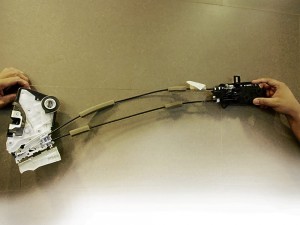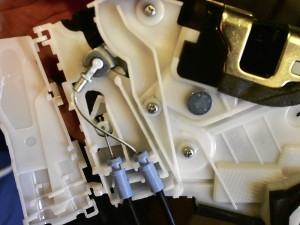
Such timing.
A day after Inquirer Motoring came out with a story (on July 18) about Honda Cars Philippines making it a corporate habit to issue public recalls, the carmaker announced that it would be recalling some 834 units of the CR-V 2012 model sold in the Philippines between April and July 2012, in order to replace the inner door handle and/or door latch assembly with countermeasure parts. All the recalled units were manufactured in Japan.
According to HCPI, findings showed that if the manual or power door lock was activated while an interior front door handle was being opened by an occupant, the cable connecting the interior door handle to the door latch mechanism could loosen and move out of position far enough to make the interior door handle inoperable and, in “very extreme cases,” prevent the door from properly latching. The worst-case scenario would be that a front door could be closed but not fully latched, allowing the door to swing open while the car is in motion or making a swift turn.
The company said that it carried out a proactive market action through the conduct of a voluntary recall, as a response to the eight defective CR-V door latches spotted out of the more than 300,000 units sold worldwide.
When asked about the “proactive” aspect of the recall, an HCPI official said in an e-mail, “with or without any specific law (about recall procedures in the Philippines), Honda will always do what is right, and voluntarily do a recall if and when it is necessary.”
During the press conference announcing the recall, Honda officials pointed out that the practice of voluntary recalls hasn’t hurt Honda Philippines in the past, sales wise. They cited a voluntary recall of the Honda Civic in 2005 involving the fuel tank band of the units. The Civic 2006 was introduced and eventually surpassed the sales performance of the 2005 model.
“The positive response to the Civic recall in 2005 was due to the positive or factual reporting in the media that eventually built the confidence in our brands. This resulted in an overwhelming market acceptance for the new-generation Civic model launched in 2006; Honda customers understood and appreciated the intention of Honda behind the public announcement that the quality and the safety of the customers are the topmost priorities of Honda,” an HCPI official said.

In a statement sent to Inquirer Motoring, HCPI said: “We believe that Honda car owners have now realized that Honda put the highest attention to its quality and will always think of its customers first before anything else.”
On Feb. 19, 2011, HCPI issued a voluntary recall. Four pieces of the lost-motion-spring retainers in the cylinder head of the Honda Jazz (distributed from September 2008 to April 2010) and the 1.5-liter Honda City (distributed from January 2009 to April 2010) had to be replaced right away. HCPI narrated afterwards that “in 2010, Jazz sales averaged 170 units per month while City sales averaged 740 units per month. In 2011, the Japan earthquake in March and the Thai flooding in October had a tremendous negative impact on the parts supply chain and manufacturing of Honda and its ability to consistently supply sufficient number of vehicles to its customers. Despite this negative scenario, there were some months in 2011 when Jazz sales exceeded 260 units per month while City sales exceeded 700 units per month when Honda had sufficient supply.”
HCPI assured affected CR-V owners that they would be duly notified via phone. Replacement of affected parts will be carried out in all 28 authorized dealers and three service centers nationwide starting Aug. 1, 2012.

